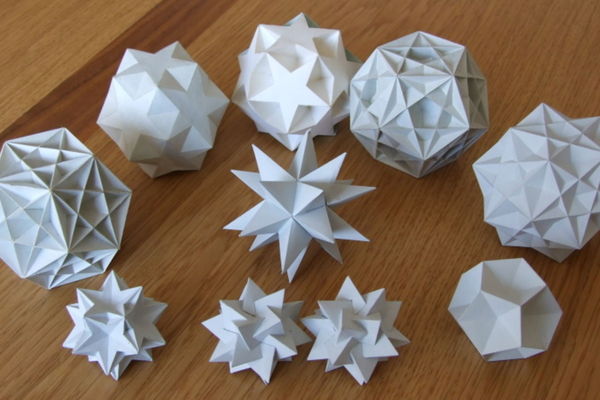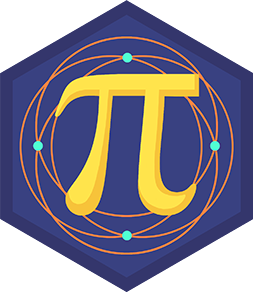Make 3d polyhedra
Cut and fold paper templates to build several 3D polyhedra (cube, tetrahedron, dodecahedron), decorate faces, count vertices and edges, and compare shapes.



Step-by-step guide to make 3D polyhedra
Mathematics Project.....3D pop up nets of polyhedra
Step 1
Gather all materials and clear a flat workspace so you have room to draw cut and build.
Step 2
Draw a cube net by using your ruler to make six equal squares in a cross shape on one sheet of paper.
Step 3
Draw a tetrahedron net by using your ruler and protractor to make four equal equilateral triangles connected at edges.
Step 4
Draw one regular pentagon by drawing a side then using the protractor to mark interior angles of 108° and making five equal sides then trace that pentagon to make twelve copies for a dodecahedron.
Step 5
Carefully cut out the cube net the tetrahedron net and all twelve pentagons using the scissors.
Step 6
Colour or decorate the faces of each cut net and each pentagon using your colouring materials.
Step 7
Fold along every edge line of the cube net to make crisp creases before gluing.
Step 8
Glue or tape the cube edges together to build the cube and let the glue set.
Step 9
Fold along the edges of the tetrahedron net and glue or tape the edges to form the tetrahedron.
Step 10
Assemble the dodecahedron by gluing the twelve pentagons edge to edge so each edge matches and the solid closes up.
Step 11
Count and write down the number of faces vertices and edges for the cube tetrahedron and dodecahedron.
Step 12
Compare the three shapes by noting which has the most faces which has the fewest vertices and one other difference you notice.
Step 13
Take photos and share your finished polyhedra project on DIY.org.
Final steps
You're almost there! Complete all the steps, bring your creation to life, post it, and conquer the challenge!


Help!?
What can we use if we don't have a protractor, heavy paper, or craft glue?
If you don't have a protractor to draw 108° pentagons, use printable nets or trace a template for the pentagon and substitute cereal-box cardboard or folded printer paper for heavy paper and clear tape for glue when assembling edges.
My cube/tetrahedron/dodecahedron won't close or the edges are misaligned — what should we try?
To fix misaligned edges when folding and gluing the cube, tetrahedron, or dodecahedron, score every edge line with the back of the scissors and a ruler for crisp creases, use thin glue or small pieces of tape at the joins, and assemble slowly matching one edge at a time.
How can we adapt this activity for younger or older children?
For younger kids, pre-draw and pre-cut the cube and tetrahedron nets and let them color and tape the pieces together, while older kids can precisely draw the 108° pentagon with a protractor, make the twelve copies and assemble the full dodecahedron and then count faces, vertices, and edges to check their work.
What are some ways to extend or personalize our finished polyhedra?
Extend the project by decorating each face with patterns or labels, adding number stickers and recording the face-vertex-edge counts in a comparison chart, attaching magnets or string to make a mobile, and photographing the personalized polyhedra to share on DIY.org as the instructions suggest.
Watch videos on how to make 3D polyhedra
How to 3D Model Using Blender - Easy Beginner Guide + Tips and Tricks
Facts about polyhedra and solid geometry
✂️ There are 11 distinct nets that fold into a cube — different paper templates can make the same solid.
⭐ A dodecahedron has 12 pentagonal faces, 20 vertices, and 30 edges — great for decorating lots of faces!
🧩 A cube has 6 faces, 8 vertices, and 12 edges — count them as you build!
🔺 A tetrahedron has 4 triangular faces, 4 vertices, and 6 edges — the simplest 3D solid.
🧮 Euler's formula V − E + F = 2 works for convex polyhedra like the tetrahedron, cube, and dodecahedron.
How do I make 3D polyhedra by cutting and folding paper templates?
What materials do I need to build paper polyhedra (cube, tetrahedron, dodecahedron)?
What ages are suitable for cutting, folding, and assembling paper polyhedra?
What are the benefits, safety tips, and variations for making paper polyhedra with kids?


One subscription, many ways to play and learn.
Only $6.99 after trial. No credit card required



